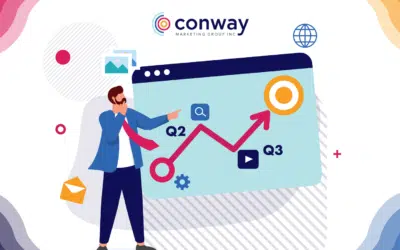In today’s digital age, establishing an online presence is not just a necessity—it’s a strategic advantage, especially for healthcare providers like you. However, having a website alone is no longer sufficient. It’s crucial to adopt a user-centric web design approach that prioritizes your customers’ or patients’ needs and enhances their overall experience. This article delves into why user-centric web design is essential in healthcare, its significant benefits, key elements for effective implementation, and how partnering with Conway Marketing Group can propel your healthcare business forward.
Discover how our expertise in creating patient-focused online experiences can make a tangible difference. By prioritizing your patients and their needs, we ensure that your digital presence not only meets but exceeds expectations. Let Conway Marketing Group guide you in this journey, helping you achieve enhanced patient satisfaction and business growth.
Why User-Centric Web Design Matters in Healthcare
User-centric web design is essential in healthcare, where understanding and addressing the needs of patients and their caregivers is paramount. By prioritizing usability, accessibility, and user engagement, you can build trust, enhance patient satisfaction, and improve health outcomes. Your website serves not just as a digital front door but as a robust tool for patient education, appointment management, and communication. Embrace a design that reflects your commitment to providing exceptional care and fostering meaningful connections with those you serve.
4 Key Benefits of User-Centric Design
- Improved Patient Engagement: Your user-friendly interfaces simplify essential processes like appointment scheduling, accessing medical records, and obtaining healthcare information. With intuitive navigation and engaging content, patients stay informed and connected, actively participating in their healthcare journey.
- Enhanced Trust and Credibility: A professionally designed website showcases your commitment to quality care and patient-centric service delivery, instilling confidence in patients. Providing clear, accessible information builds credibility and fosters a strong patient-provider relationship.
- Better Accessibility: Ensuring your website’s accessibility means all patients, regardless of disabilities, can navigate and access information easily. Compliance with accessibility standards not only broadens your reach but also demonstrates your dedication to inclusivity and regulatory adherence.
- Higher Conversion Rates: Streamlining the user experience on your website leads to higher conversion rates, whether through increased appointment bookings, inquiries, or patient portal utilization. Clear calls-to-action guide patients toward the next steps in their healthcare journey, minimizing drop-offs and maximizing engagement.
7 Key Elements of Effective User-Centric Web Design
- Intuitive Navigation: Design a website with a logical structure and intuitive navigation, enabling users to quickly find essential information such as services offered, contact details, and patient resources. Easy accessibility from the homepage is crucial.
- Mobile Responsiveness: Given the prevalence of mobile devices, ensure your website is fully responsive across all screen sizes. This guarantees a seamless user experience, whether patients access your site from a desktop, tablet, or smartphone.
- Fast Load Times: In healthcare, where time is critical, optimize your website for speed to minimize loading times. A fast-loading website enhances user satisfaction and prevents patients from seeking services elsewhere due to slow performance.
- Clear Visual Hierarchy: Use visual elements such as headings, subheadings, and bullet points to create a clear hierarchy of information. This helps users navigate through content effortlessly, focusing on the most relevant information for their needs.
- Personalization: Tailor content and user experiences based on individual patient preferences and behaviors. Personalization might include health tips, appointment reminders, and relevant health information, enhancing user engagement and satisfaction.
- Accessible Design: Ensure your website complies with accessibility standards such as WCAG (Web Content Accessibility Guidelines). Provide alternatives for multimedia content, use descriptive alt text for images, and ensure keyboard navigability to accommodate users with disabilities.
- Engaging and Informative Content: Content plays a crucial role in user-centric web design. Offer valuable information that addresses patient concerns, educates on health topics, and highlights your expertise through blogs, FAQs, and patient testimonials. Engaging content not only informs but also builds trust and strengthens your reputation as a healthcare provider.
Book Your Consultation for a Patient-Centric Healthcare Website
Transform your healthcare business with expert user-centric web design. Beyond aesthetics, we deliver a seamless, engaging, and patient-centered online experience. By prioritizing patient needs and preferences, we foster trust, enhance engagement, and improve health outcomes.
Contact us now to book your consultation and begin your journey towards a more patient-centric healthcare website. Let’s collaboratively shape a digital experience that empowers patients and enhances your practice’s success.



